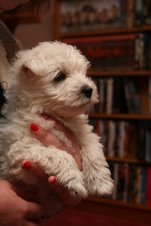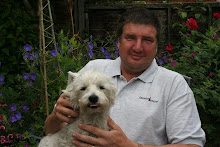 |
| New species for 2016 - these Khaki Campbell ducklings |
 |
| Careful swimming lessons for the not-very-waterproof ducklings |
2 Buff Orpington Roosters (The Lieutenant and the Captain)
5 Buff Orpington hens including one of our own breeding last year (Remember "hen and one"?)
1 Sussex Ponte hen
1 Cuckoo Marans hen
2 Hubbard hens (0ne red, one white)
2 "Mini Buff" hybrid hens
That's 11 hens by my reckoning.
 |
| Eyes down - 8 sheep line up at the trough. |
1 gander (George)
4 geese (technically 2 wives of George and 2 daughters but he's not too particular!)
3 Guinea Fowl including our original hen (Min) and 2 possible suitors (Apollo and Belvedere)
4 newly hatched Buff Orp chicks (pure bred we hope but time will tell)
6 newly hatched ducklings
1 pair of turkeys (Tom and Barbara)
That is 33 birds, total.
 |
| Newly built duckling and chick brooder box. A sheet of house insulation, some old election posters and a rabbit hutch roof. Load of gaffer tape and Bob's your uncle. |
3 ewes (Lily, Polly and Myfanwy)
5 lambs (3 ewe lambs, 2 ram lambs). One of these, Rosie Probert is a 'keeper' and will become our replacement ewe as old Polly (9) heads for retirement*.
2 new pigs - 10 weeks old at present. "Oxford Sandy and Black" breed (OSBs) named Somerville and Ross
Guest goat (Nanny Óg) and her week old son Henry Óg (our newest animal).
3 dogs (Deefer, Towser and Poppea)
2 cats (Big fluffy 'Blue' and young lanky pretender, Soldier.
 |
| Home made 'hedgerow' wine used up the freezer bags of fruit. |
 |
| The log mountain almost 'complete'. |
 |
| My kind of Birthday Present! |
The sweet little ducklings need to be taught to swim. Well, not true, exactly - they need to be shown water so that they will swim and get wet, to make sure they then learn the preening behaviour which will let them spread their own natural water-proofing oils all over their feathers. Ducklings hatched in nature are straight way rummaging around in Mum's feathers and pick up the preen-gland oils from her. They hit the water already proofed and float like corks. Their own preen glands take a couple or three weeks to develop, so ducklings hatched in an incubator have a problem. If they get into water, they just waterlog and sink very quickly, as well as getting very cold from the water-skin contact. The breeder/brooder must introduce them to shallow, warm-ish water in a safe way for the first weeks to stimulate the preening behaviour which will coat their duckling-fluff with the oil. Liz is having great fun doing this in our Sitting Room using a cat litter tray (with flat rocks as 'beaches') and a big, water-absorbing rug.
There ends my stock take. In the words of all 'Thank You' speech givers everywhere, I hope I have not forgotten anybody. If I have I will have to sneak back into this post with my tail between my legs and add any forgotten birds or beasts under cover of darkness.
 |
| Newest animal, Henry Óg a week old. |


No comments:
Post a Comment